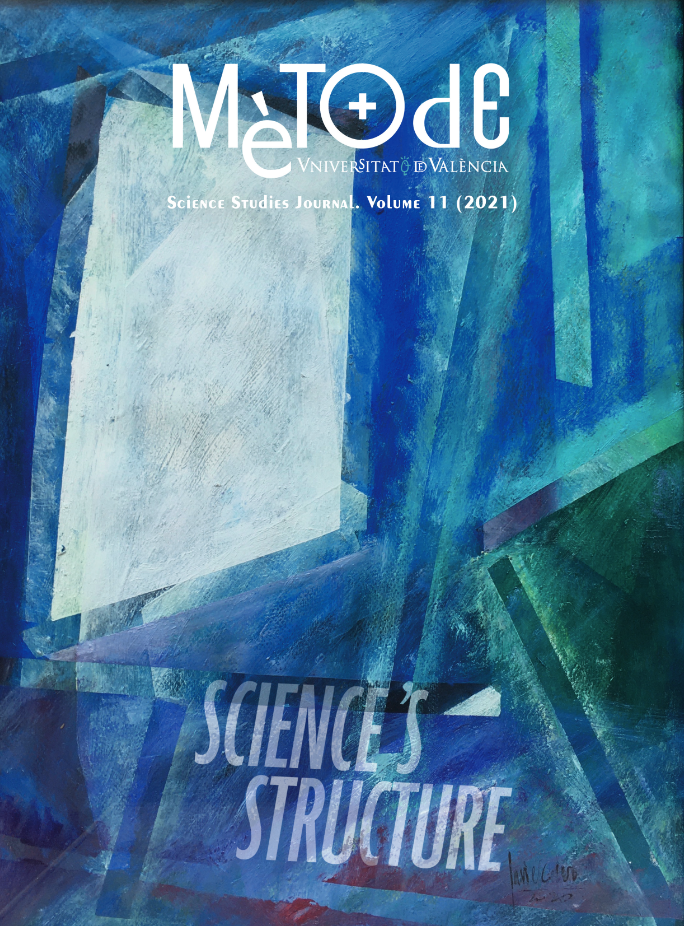Tsunamis, waves, Quixotes, and KO-vid: Metaphors about the pandemic as seen in cartoons
DOI:
https://doi.org/10.7203/metode.11.18273Keywords:
metaphor, COVID-19, cartoons, discourse analysis, construals Abstract
Abstract
Several studies have shown evidence for the significant role that metaphors play in public health communication. The arrival of the COVID-19 pandemic has triggered not only the use of common communication frameworks such as war metaphors, but also the creative use of metaphors, which is particularly relevant in the case of cartoonists. This article presents a review of the different metaphors used in cartoons (both in Spanish and in English), with the aim of compiling different metaphorical uses and reflecting upon the evaluative function of metaphors and how they contribute to expressing different visions of reality. The examples collected here show not only how certain social and political actions are legitimised or discredited, but also how these uses often appeal to particular contextual knowledge.
 Downloads
Downloads
 References
References
Ceccarelli, L. (2020). COVID-19: Las metáforas de la pandemia. Métode, 105, 9. https://metode.es/revistas-metode/opinio-revistes/especial-covid-19-es/covid-19-las-metaforas-de-la-pandemia.html
Deane, P. D. (1993). On metaphoric inversion. Metaphor and Symbolic Activity, 8(2), 111–126. https://doi.org/10.1207/s15327868ms0802_3
Domínguez, M. (2014). Einstein versus neutrinos: The two cultures revisited with the media coverage of a scientific news item in cartoons. Science Communication, 36(2), 248–259. https://doi.org/10.1177/1075547012472685
Domínguez, M. (2015). On the origin of metaphors. Metaphor and Symbol, 30, 240–255. https://doi.org/10.1080/10926488.2015.1049858
Filardo-Llamas, L. (2020a, June 4). Metáforas del coronavirus. [Video]. YouTube. https://www.youtube.com/watch?v=ANPTgkfFR28
Filardo-Llamas, L. (2020b, September 15). No es lo mismo estar en guerra que remar juntos: La importancia de las metáforas sobre COVID-19. The Conversation. Retrieved September 16, 2020, from https://theconversation.com/no-es-lo-mismo-estar-en-guerra-que-remar-juntos-la-importancia-de-las-metaforas-sobre-covid-19-144337
Flusberg, S. J., Matlock, T., & Thibodeau, P. H. (2018). War metaphors in public discourse. Metaphor and Symbol, 33(1), 1–18. https://doi.org/10.1080/10926488.2018.1407992
Forceville, Ch. (2020). Visual and multimodal communication. Applying the relevance principle. Cambridge University Press.
Forceville, Ch., & Urios-Aparicio, E. (Eds). (2009). Multimodal metaphor. Mouton de Gruyter.
Garrido Díaz, S. (2020, April 1). Esto no es una guerra y la metáfora ya no vale. El Diario. Retrieved September 12, 2020, from https://www.eldiario.es/opinionsocios/guerra-metafora-vale_132_1218166.html
Lakoff, G., & Johnson, M. (1980). Metaphors we live by. Chicago University Press.
Lawson, R. (2020, April 28). Coronavirus has led to an explosion of new words and phrases – and that helps us cope. The Conversation. Retrieved September 12, 2020, from https://theconversation.com/coronavirus-has-led-to-an-explosion-of-new-words-and-phrases-and-that-helps-us-cope-136909
Llopis-García, R. (2020a, May 21). #ReframeCovid - Más abrazos y menos guerra. https://reyesllopisgarcia.com/blog/2020/5/21/reframecovid-mas-abrazos-menos-guerra
Llopis-García, R. (2020b, June 2). #ReframeCovid - Monsters and machines in the time of corona. https://reyesllopisgarcia.com/blog/2020/6/2/reframecovid-monsters-and-machines
Martí, F. (2020, October 5). Radar covid. Humor fresco del día. https://ferranhumor.wordpress.com/
Olza, I. (2020). #ReframeCovid. Retrieved September 9, 2020, from https://sites.google.com/view/reframecovid/home?authuser=0
Sánchez, P. (2020, March 28). El presidente del Gobierno anuncia la suspensión de las actividades no esenciales. La Moncloa. https://www.lamoncloa.gob.es/presidente/actividades/Paginas/2020/28032020_noesenciales.aspx
Semino, E. (2008). Metaphor in discourse. Cambridge University Press.
Tisdall, S. (2020, March 21). Lay off those war metaphors, world leaders. You could be the next casualty. The Guardian. https://www.theguardian.com/commentisfree/2020/mar/21/donald-trump-boris-johnson-coronavirus
Villarroya, M. A. (2020, March 20). Rueda de prensa posterior a la reunión del Comité de Gestión Técnica del Coronavirus. La Moncloa. https://www.lamoncloa.gob.es/multimedia/galeriasfotograficas/covid19/Paginas/200320-tecnicos-coronavir.aspx
Wicke, P., & Bolognesi, M. (2020). Framing COVID-19: How we conceptualize and discuss the pandemic on Twitter. ArXiv. https://arxiv.org/abs/2004.06986
Downloads
Published
How to Cite
-
Abstract1980
-
PDF745
Issue
Section
License
![]()
All the documents in the OJS platform are open access and property of their respective authors.
Authors publishing in the journal agree to the following terms:
- Authors keep the rights and guarantee Metode Science Studies Journal the right to be the first publication of the document, licensed under a Creative Commons Attribution-NonCommercial-NoDerivatives 4.0 International License that allows others to share the work with an acknowledgement of authorship and publication in the journal.
- Authors are allowed and encouraged to spread their work through electronic means using personal or institutional websites (institutional open archives, personal websites or professional and academic networks profiles) once the text has been published.





